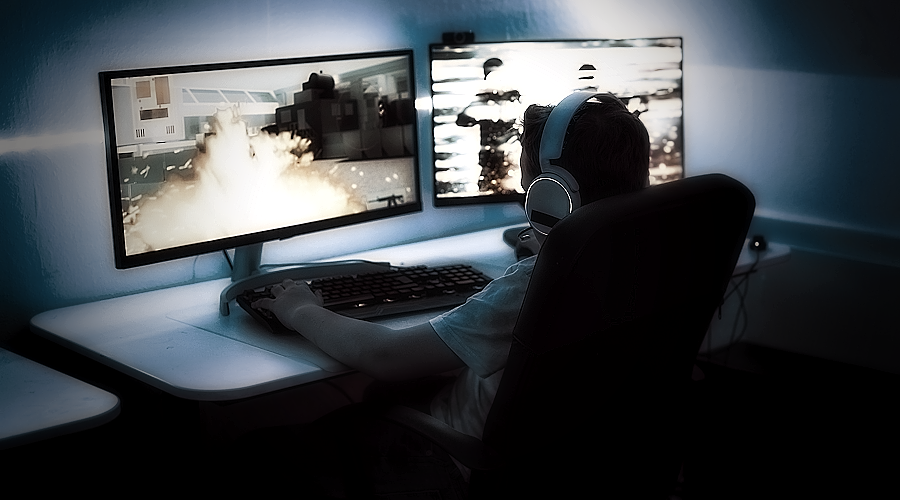
Every year on World Sight Day, which falls on October 9, the theme is “Love Your Eyes.”
Health professionals worldwide highlight the importance of eyecare and preventing avoidable blindness.
While much of the discussion centers on cataracts, refractive errors, and vision screening access, an emerging concern is quietly transforming our visual perception itself.
That concern is the increase in excessive screen use and Internet Gaming Disorder (IGD) among adolescents.
The new digital addiction
In today’s digital world, screens dominate nearly every aspect of life, in learning, leisure, and social interaction.
For many teenagers, gaming offers a sense of excitement, connection, and accomplishment. But for some, what starts as fun becomes a compulsive habit that disrupts sleep, academic performance, and health.
Internet Gaming Disorder (IGD) has emerged as a growing global health concern in the digital era.
Recognized by both the World Health Organization (WHO) and the American Psychiatric Association, IGD is defined as a behavioral addiction marked by loss of control over gaming, prioritizing it over other daily activities, and continuing to play despite experiencing negative consequences1,2.
Globally, an estimated 3 percent of internet users meet the criteria for IGD, with significantly higher rates reported among adolescents in Asia3.
In Malaysia, local studies suggest that around 3 to 4 percent of adolescents experience symptoms consistent with IGD, a figure that is expected to rise as the number of young online gamers continues to grow4.
Behind every statistic lies a web of risk factors: unsupportive parenting, peer pressure, social isolation and immersive design of modern games5,6.
IGD rarely occurs in isolation; it often coexists with other addictive behaviors, including gambling and substance use, as well as links to anxiety, depression, and poor academic performance.
Adolescents who experience bullying, loneliness, or stress may turn to gaming as an escape, reinforcing the cycle of dependence5-7.
When the eyes begin to tire
The human eye was never designed for prolonged exposure to artificial light or rapidly moving digital images. Prolonged screentime or gaming sessions can lead to Digital Eye Strain (DES), a condition now affecting more than half of school-aged children. The symptoms include:
■ Dry, itchy, or watery eyes
■ Blurred vision and headaches
■ Neck and back pain from poor posture
For teenagers, whose eyes are still developing, the effects can be even more serious. They are at increased risk for rapid myopia (short-sightedness), eye misalignment, and coordination problems.
Beyond the eyes: The whole-body impact
Excessive gaming and prolonged screen exposure affect not only visual health but also overall physical and psychological well-being.
Extended engagement with digital screens can disrupt circadian rhythms through blue light exposure, contributing to insomnia, daytime fatigue, and poor sleep quality.
Physical inactivity during gaming increases the risk of musculoskeletal discomfort, postural strain, and weight gain.
Psychologically, excessive gaming is linked to irritability, anxiety, social withdrawal, and reduced concentration, forming a cycle of visual fatigue and cognitive decline that can ultimately impair academic performance6-9.
Parents and teachers often notice early warning signs like tired eyes, irritability, late-night gaming, and decreased motivation.
Sadly, these signs are often dismissed as “normal teenage behavior,” which can delay essential intervention.
A World Sight Day wake-up call
The theme for World Sight Day 2025, “Love Your Eyes,” encourages everyone to prioritize vision care.
Loving our eyes today means practicing digital hygiene and responsible screen use every day.
Experts recommend simple but effective strategies to reduce strain:
■ Follow the 20-20-20 rule: Every 20 minutes, look 20 feet away for 20 seconds.
■ Blink often to keep eyes moist and refreshed.
■ Use lubricating eye drops when needed.
■ Adjust your workstation ergonomics: Keep screens an arm’s length away and slightly below eye level.
■ Take regular breaks and limit screen use before bedtime.
Technological innovations such as blue-light filters, anti-reflective coatings, and high-resolution displays also help reduce visual fatigue. But these should complement, and not replace healthy habits.
Helping teens see beyond the screen
Protecting adolescent eye health requires a collective community-wide effort.
Schools can integrate digital well-being into health education, while parents can set limits on gaming time and encourage outdoor activities.
Simple lifestyle habits, such as regular breaks, balanced sleep schedules, and screen-free mealtimes, can make a major difference.
At the same time, society must shift its perception. Gaming is not inherently harmful; it becomes problematic only when moderation and balance are lost.
Encouraging teens to engage in gaming responsibly, alongside physical and social activities, helps them maintain both mental and visual well-being.
Seeing the future clearly
As we mark World Sight Day, the message is straightforward: safeguarding our eyesight involves more than just wearing glasses or seeking medical treatment; it requires adapting to a world dominated by screens.
Our eyes are the first to indicate when our digital habits become excessive, but their warnings are often overlooked.
This World Sight Day, let’s genuinely “love our eyes” by blinking more, gazing into the distance, and using screens wisely10,11.
After all, in the game of life, having a clear vision is the most valuable achievement.
References:
[1] (2024). Gaming disorder. World Health Organization.
[2] Pontes, H. M., & Griffiths, M. D. (2015). Measuring DSM-5 internet gaming disorder: Development and validation of a short psychometric scale. Computers in Human Behavior, 45, 137-143.
[3] Huang, Y., Wu, R., Huang, Y., Xiang, Y., & Zhou, W. (2024). Investigating the mechanisms of internet gaming disorder and developing intelligent monitoring models using artificial intelligence technologies: protocol of a prospective cohort. BMC Public Health, 24(1), 2536.
[4] Mohamed, N. F., Ab Manan, N., Muhammad Firdaus Chan, M. F., Rahmatullah, B., Abd Wahab, R., Baharudin, S. N. A., … & Abdulla, K. (2023). The prevalence of internet gaming disorders and the associated psychosocial risk factors among adolescents in Malaysian secondary schools. Clinical child psychology and psychiatry, 28(4), 1420-1434.
[5] Field, T. (2024). Internet gaming disorder in children: a narrative review. Journal of Psychology & Clinical Psychiatry, 15(4), 245-249.
[6]. Shah, A. F., Khan, J. H., Patil, R., & Gupta, R. (2023). Assessment of the Prevalence, Risk factors of Internet Gaming Disorder and Psychological correlates in general population of North India. Asian Journal of Pharmaceutical Research, 13(4), 227-232.
[7] Imataka, G., Sakuta, R., Maehashi, A., & Yoshihara, S. (2022). Current Status of Internet Gaming Disorder (IGD) in Japan: New Lifestyle-Related Disease in Children and Adolescents. Journal of Clinical Medicine, 11(15), 4566.
[8] Trailokya, A., & Chaudhry, S. (2023). Paradigm of digital eye strain. The Journal of Community Health Management, 10(1), 82-85.
[9] Kaur, K., Gurnani, B., Nayak, S., Deori, N., Kaur, S., Jethani, J., … & Mishra, D. (2022). Digital eye strain-a comprehensive review. Ophthalmology and therapy, 11(5), 1655-1680.
[10] World Health Organization Regional Office for Africa. (2025, October 9). World Sight Day 2025: Message from the WHO Regional Director for Africa.
[11] International Agency for the Prevention of Blindness. (2025). World Sight Day.

(Dr. Nur Hidayah Mustapa, DrPH candidate; Prof. Dr. Wong Li Ping, Professor of Epidemiology and Biostatistics; Dr. Lim Yin Cheng, Senior Lecturer of Occupational and Public Health, Department of Social and Preventive Medicine, Faculty of Medicine, Universiti Malaya.)
ADVERTISEMENT
ADVERTISEMENT


































